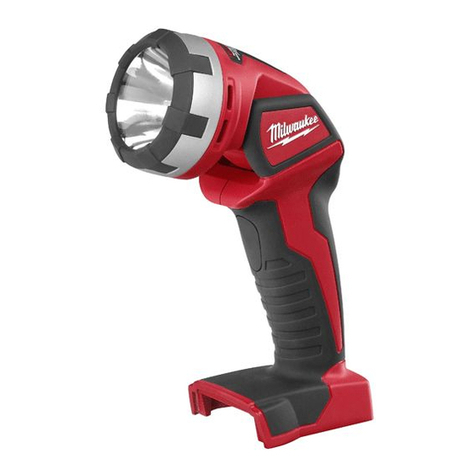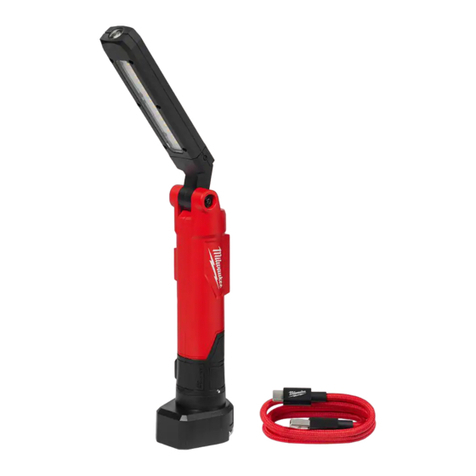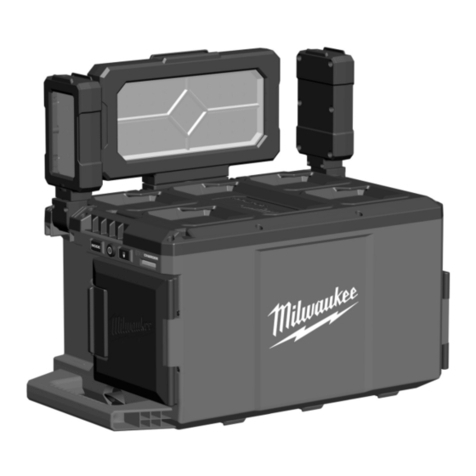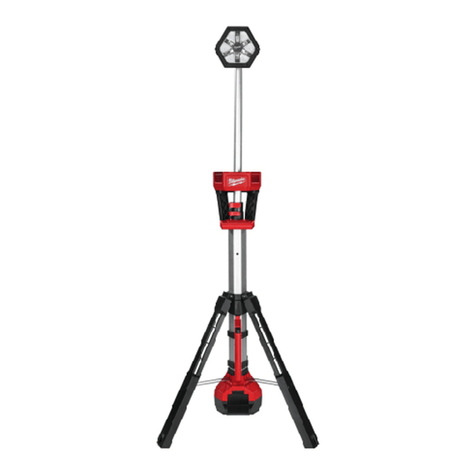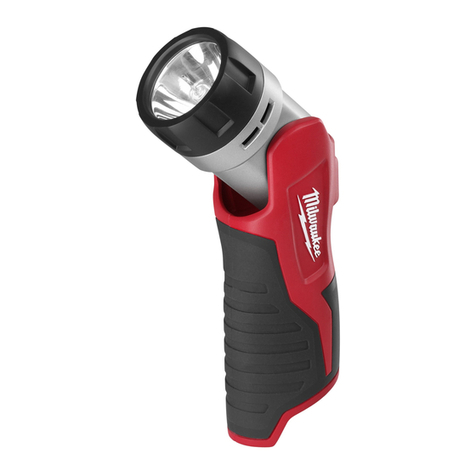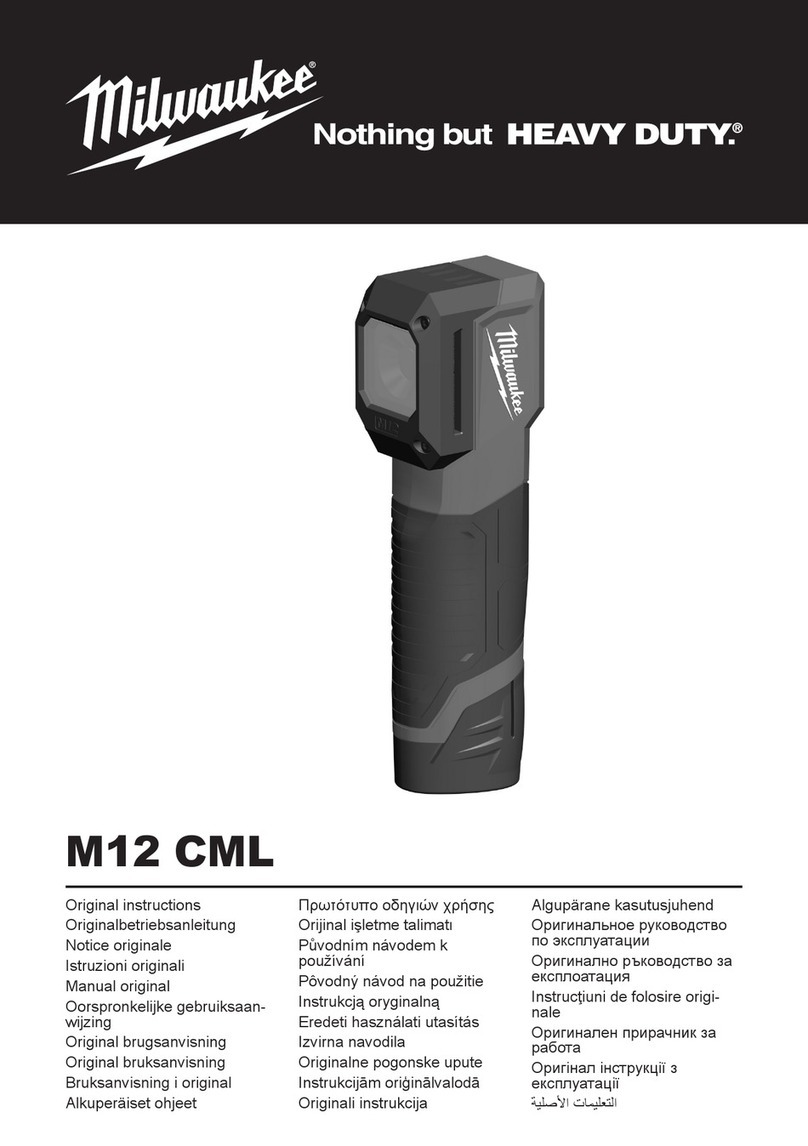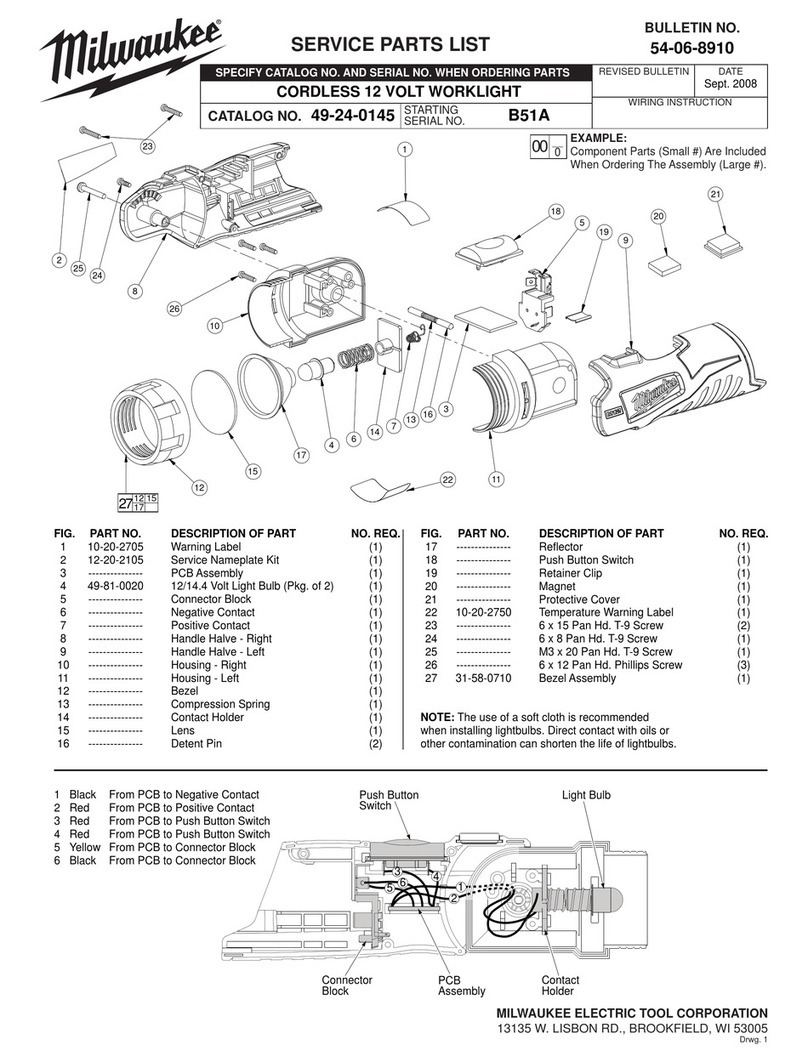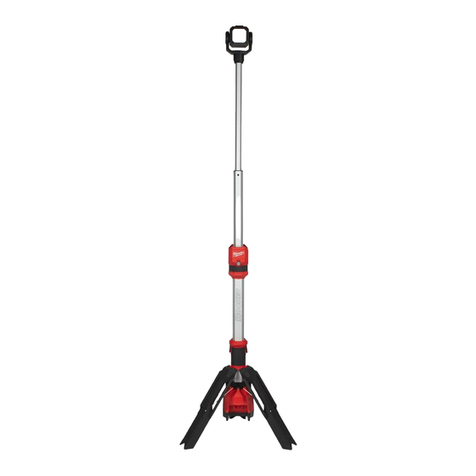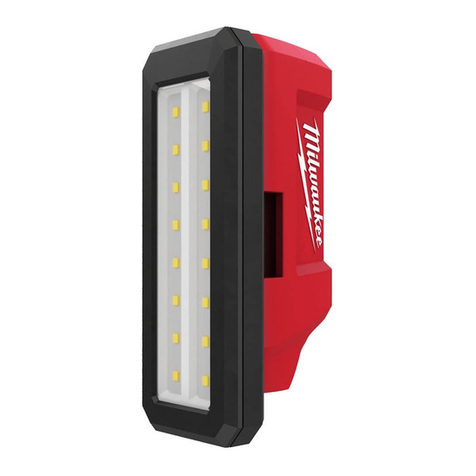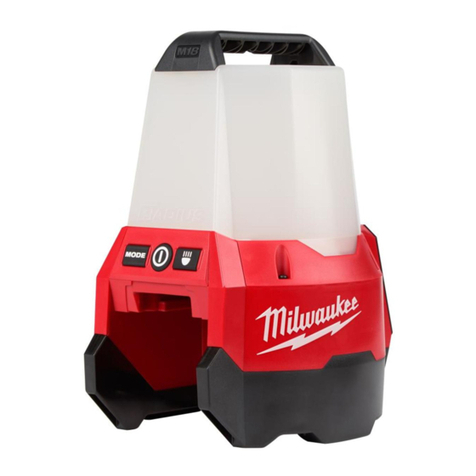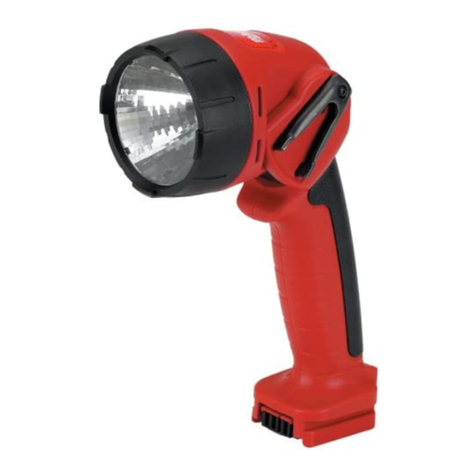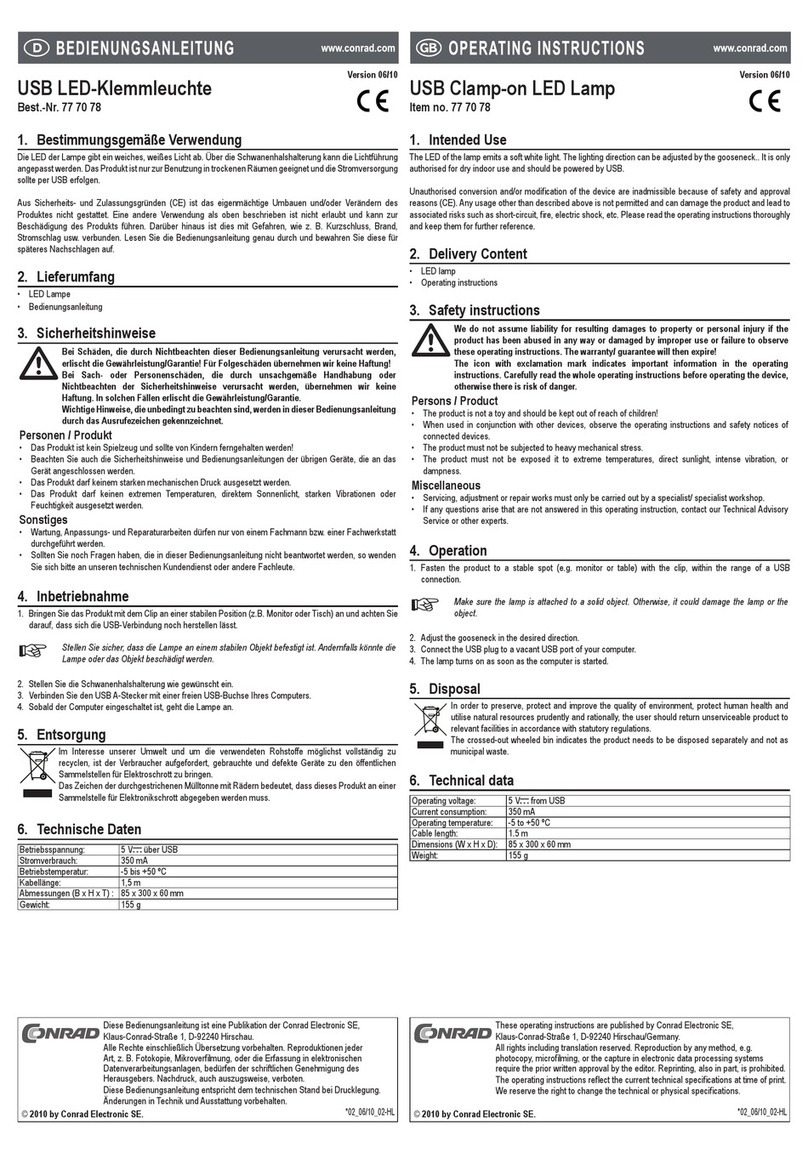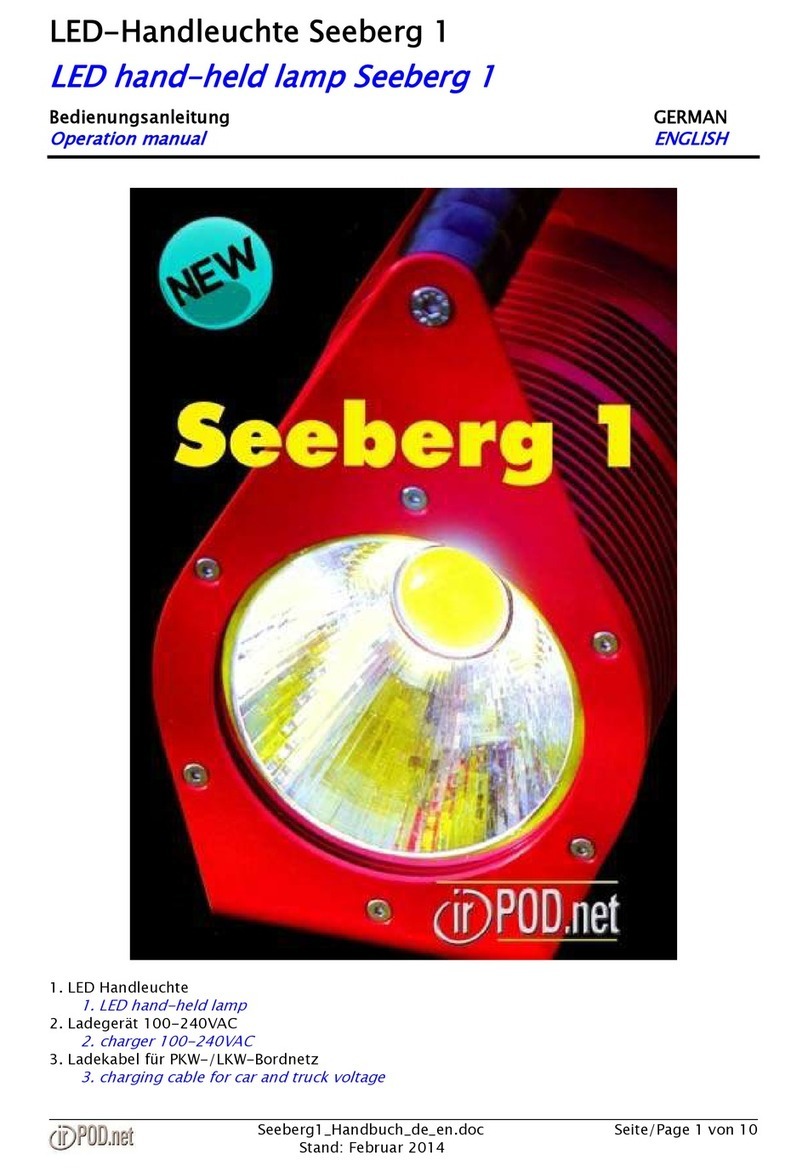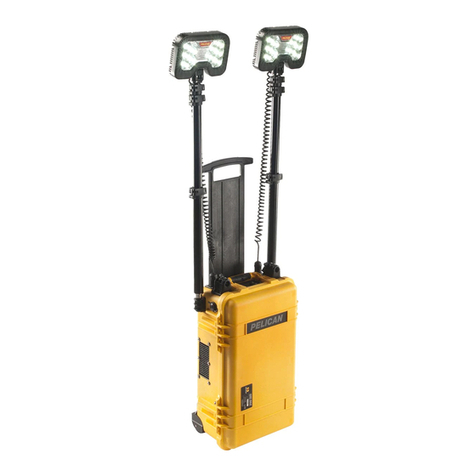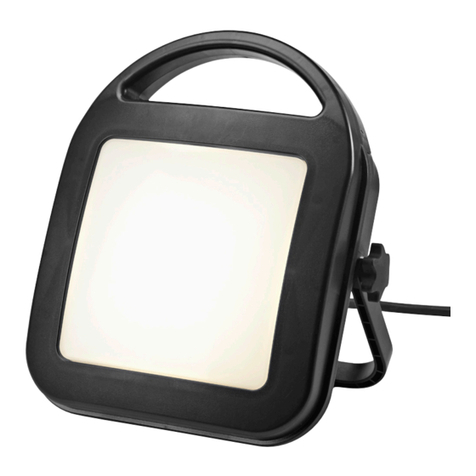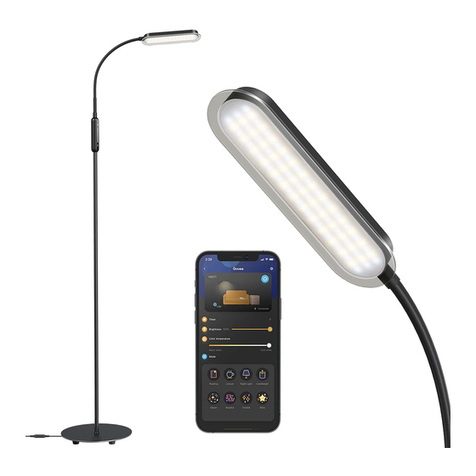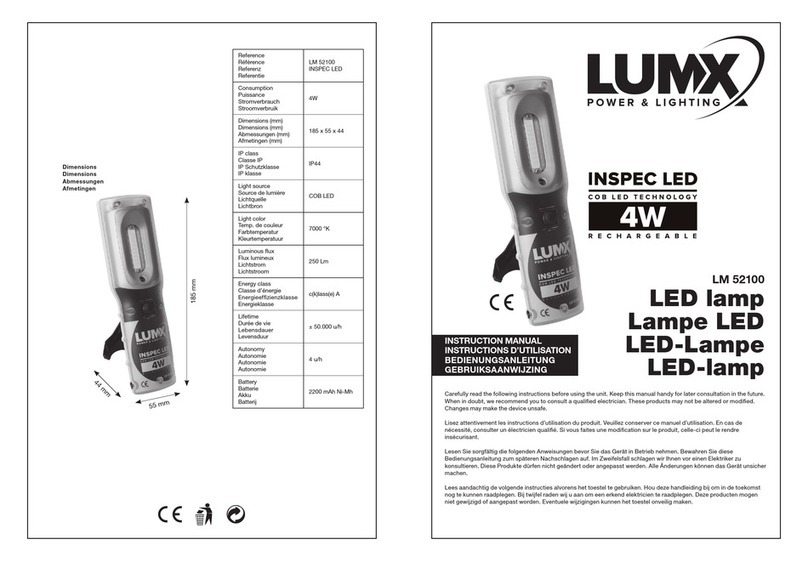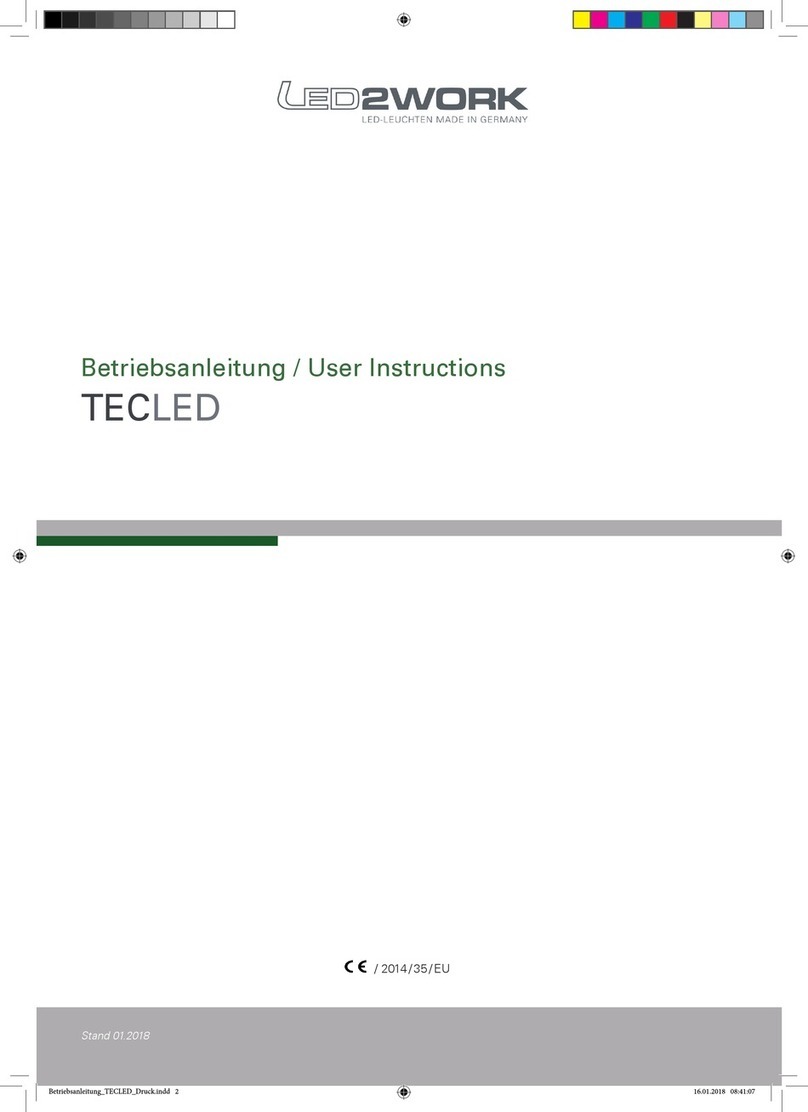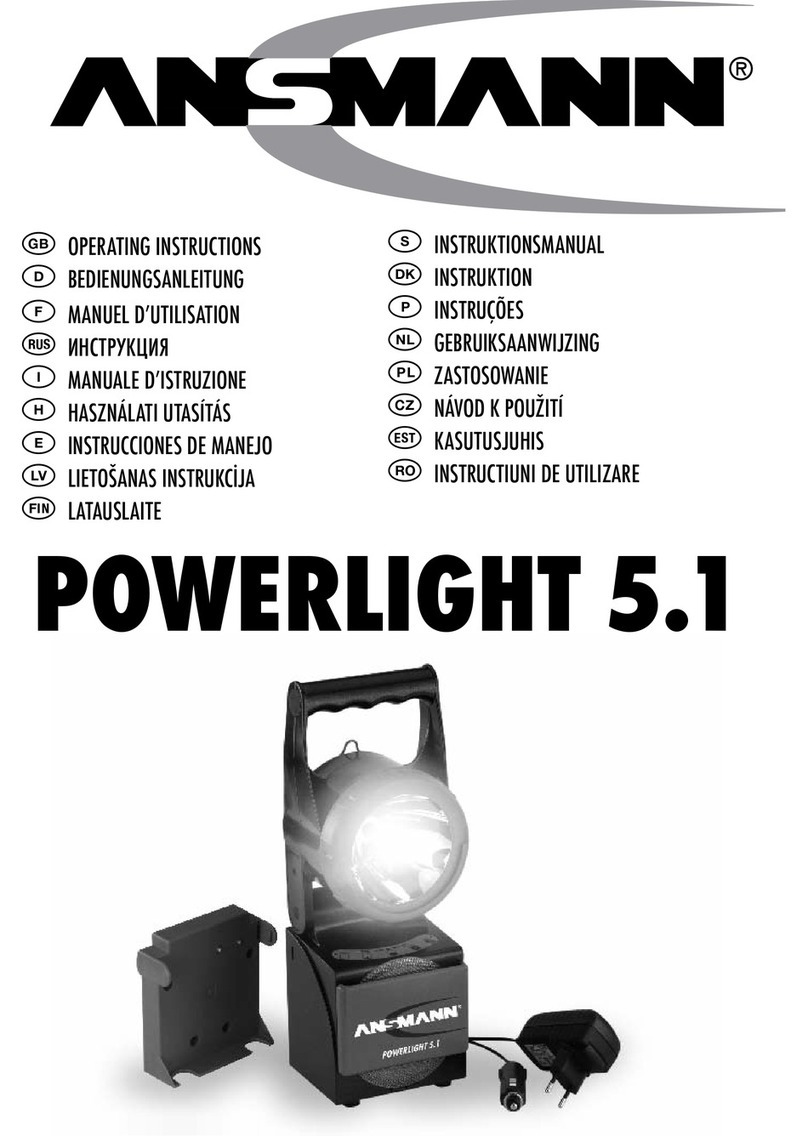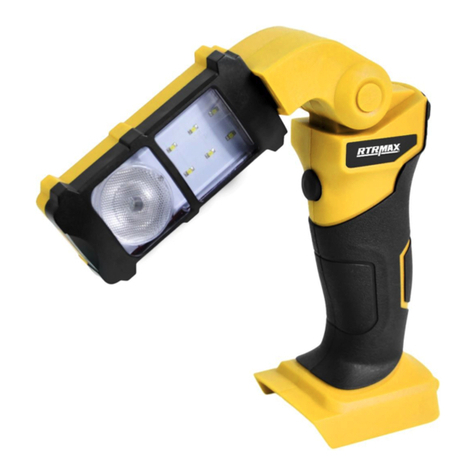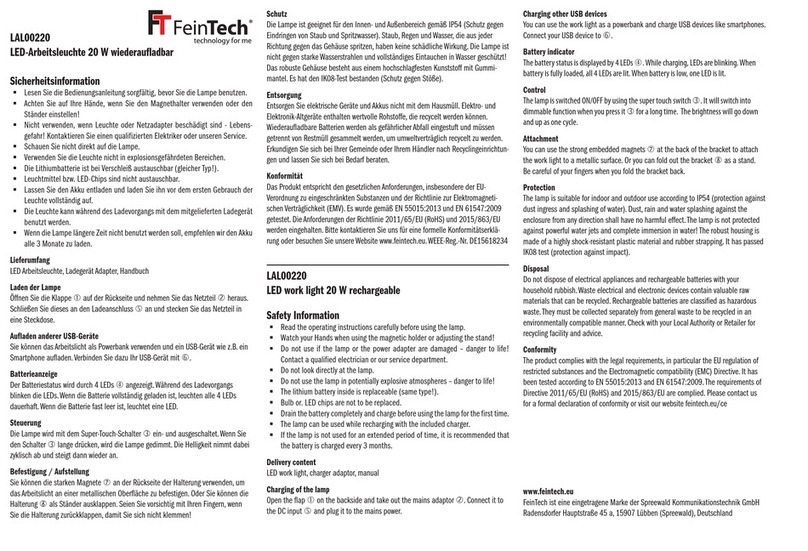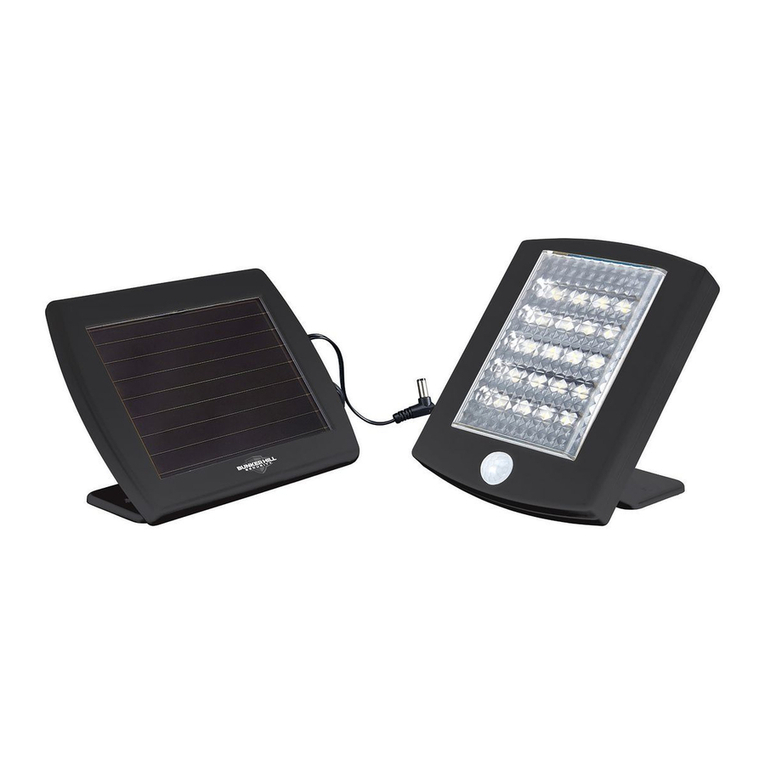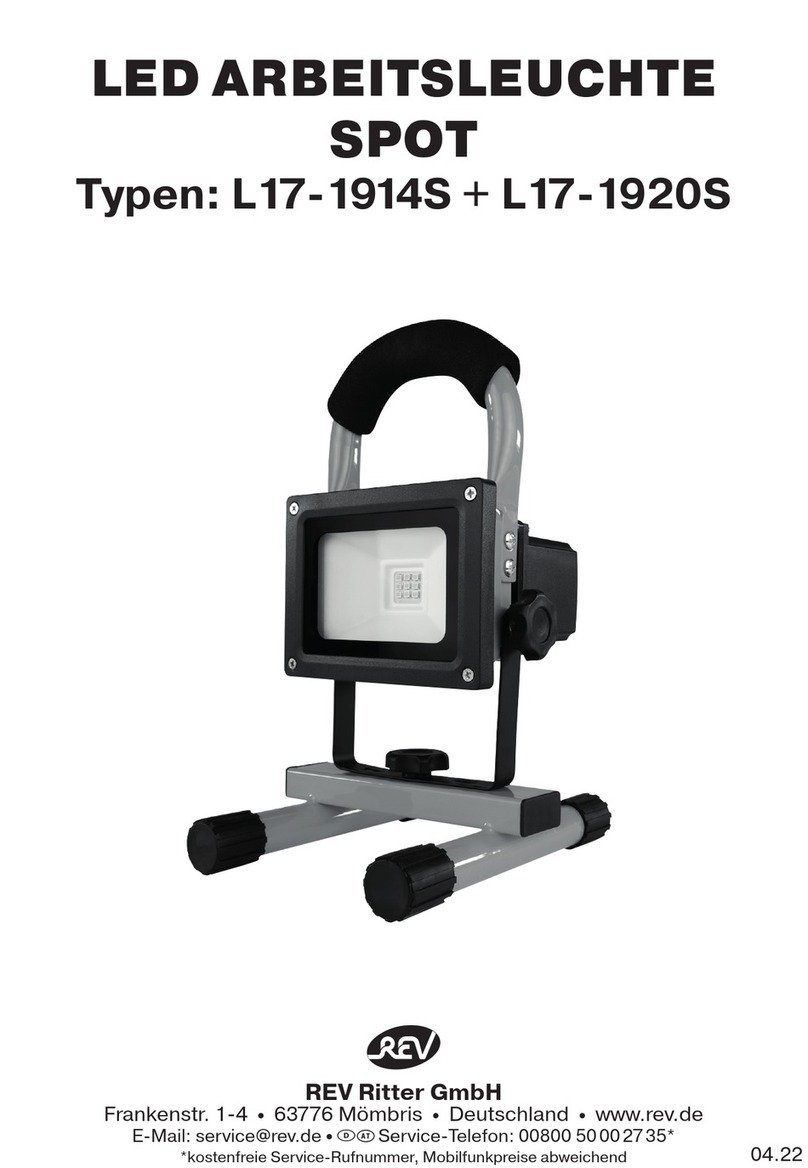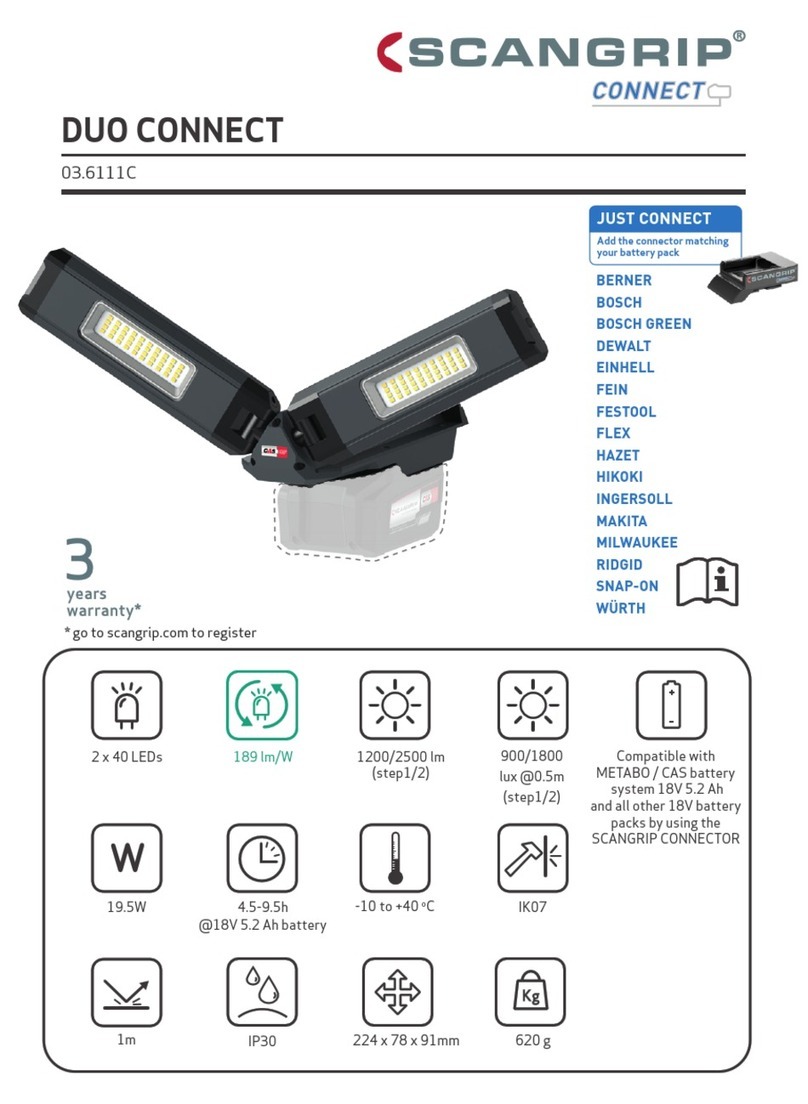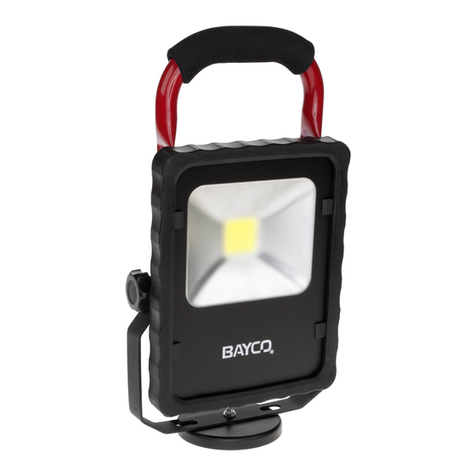
2
IMPORTANT SAFETY
INSTRUCTIONS
WARNING
WORK AREA SAFETY
ELECTRICAL SAFETY
•To reduce the risk of injury, close supervision is
necessary when an appliance is used near children.
•Store idle light out of reach of children. Warm lights
can become hazardous in the hands of children.
•Do not use outdoors.
refrigerators. There is an increased risk of electric
shock if your body is earthed or grounded.
•Power cord plugs must match the outlet. Never
modify the plug in any way. Do not use any adapter
plugs with earthed (grounded) power tools. Un-
of electric shock.
•Avoid body contact with earthed or grounded
surfaces, such as pipes, radiators, ranges and
PERSONAL SAFETY
BATTERY TOOL USE AND CARE
•Do not overreach. Keep proper footing and bal-
ance at all times. This enables better control of the
light in unexpected situations.
•Do not use on a ladder or unstable support.
Stable footing on a solid surface enables better
control of the light in unexpected situations.
•Do not expose light to rain or wet conditions. Water
entering a light will increase the risk of electric shock.
•To reduce the risk of electric shock, do not put
light in water or other liquid. Do not place or store
appliance where it can fall or be pulled into a tub or
sink.
•Do not abuse the cord. Never use the cord for car-
rying, pulling or unplugging the power tool. Keep
cord away from heat, oil, sharp edges or moving
parts. Damaged or entangled cords increase the risk
of electric shock.
•Do not unplug by pulling on the cord. To unplug,
grasp the plug, not the cord.
•Unplug the cord from outlet when not in use and
before servicing or cleaning.
•Always use a suitable extension cord to reduce the
risk of electric shock.
•
manufacturer. A charger that is suitable for one type
with another battery pack.
•
battery packs. Use of any other battery packs may
SERVICE
•When battery pack is not in use, keep it away
from other metal objects, like paper clips, coins,
keys, nails, screws or other small metal objects,
that can make a connection from one terminal
to another. Shorting the battery terminals together
•Under abusive conditions, liquid may be ejected
from the battery; avoid contact. If contact ac-
cidentally occurs, flush with water. If liquid
contacts eyes, additionally seek medical help.
Liquid ejected from the battery may cause irritation
or burns.
•
•
•
Read all safety warnings,
instructions, illustrations and
specifications provided with this power tool.
Failure to follow all instructions listed below may
result in electric shock, fire and/or serious injury.
Save all warnings and instructions for future
reference. The term "power tool" in the warnings
refers to your mains-operated (corded) power tool
or battery-operated (cordless) power tool.
Caution, risk of electric shock
•
When using light on battery only, remove power
cord from inlet.
If operating a light in a damp location is
unavoidable, use a residual current device
(RCD) protected supply. Use of a RCD reduces
the risk of electric shock.
•
Do not use a battery pack or tool that is
damaged or modified. Damaged or modified
batteries may exhibit unpredictable behaviour
resulting in fire, explosion or risk of injury.
Do not expose a battery pack or tool to fire or
excessive temperature. Exposure to fire or
temperature above 130°C (265°F) may cause
explosion.
Follow all charging instructions and do not
charge the battery pack or tool outside the
temperature range specified in the
instructions. Charging improperly or at
temperatures outside the specified range may
damage the battery and increase the risk of fire.
Have your power tool serviced by a qualified
repair person using only identical replacement
parts. This will ensure that the safety of the tool is
maintained.
Never service damaged battery packs. Service
of battery packs should only be performed by the
manufacturer or authorised service providers.
•
•
ADDITIONAL BATTERY SAFETY RULES
WARNING
To reduce the risk of fire, personal
injury, and product damage due to
a short circuit, never immerse your tool, battery
pack or charger in fluid or allow a fluid to flow inside
them. Corrosive or conductive fluids, such as
seawater , certain industrial chemicals, and bleach
or bleach-containing products, etc., can cause a
short circuit.
READ AND SAVE ALL INSTRUCTIONS
FOR FUTURE USE.
SPECIFIC SAFETY RULES FOR
FLOOD LIGHT
WARNING
Always use common sense and
be cautious when using tools. It
•
is not possible to anticipate every situation that
could result in a dangerous outcome. Do not use
this tool if you do not understand these operating
instructions or you feel the work is beyond your
capability; contact MILWAUKEE®Tool or a trained
professional for additional information or training.
WARNING
Do not charge non-rechargeable
batteries.
The light source contained in this luminaire shall
only be replaced by the manufacturer or his
service agent or a similar qualified person.
Maintain labels and nameplates. These carry
important information. If unreadable or missing,
contact a MILWAUKEE®service facility for a
replacement.
•
